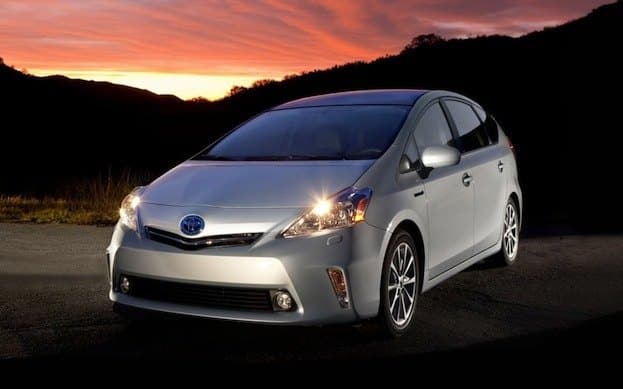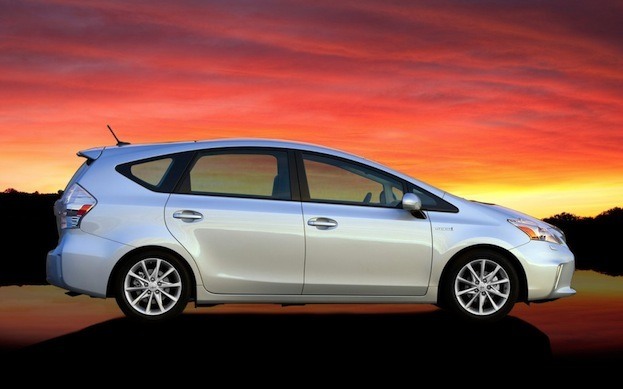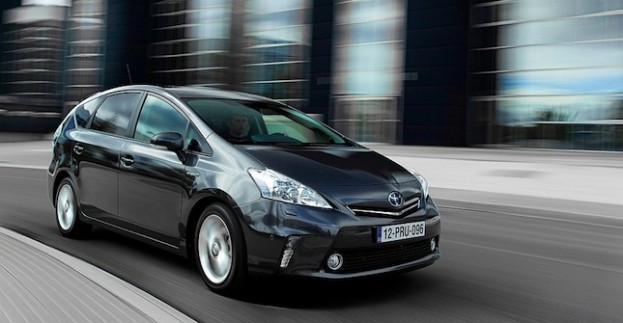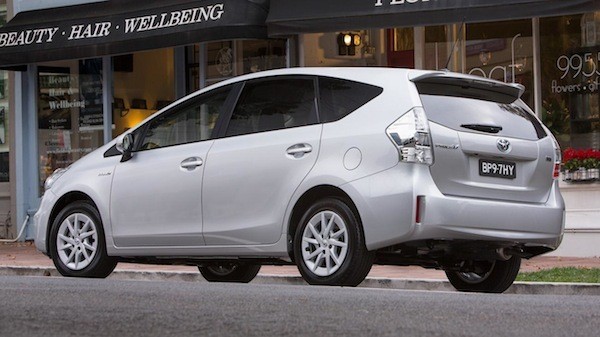Anyone who is reading this is interested in the 2013 Toyota Prius v because of its fuel mileage. Sure it has other good attributes which we will fill you in on, but good fuel efficiency is number one. I have to be honest and say that I would rather be driving a Mercedes C63 AMG Black Series, but that’s not what was delivered for me to test drive this week. But the Prius v is in a different class and is a good example of the hybrid technology Toyota is putting out. And it is some the best technology on the planet.
The Prius is all about fuel-efficiency, but the Prius v is about fuel-sipping economy and brings an element of versatility into the conversation. Prius v uses the same drivetrain as in the popular Prius liftback, but comes with 58 percent more cargo space. If you’ve checked out the standard Prius model and felt it was too small, you need to look at the v.
Prius v is 6 inches longer, 3.3 inches higher, and 1.1 inches wider than the Prius liftback. The bigger v still uses the 1.8-liter 4-cylinder gas engine that’s mated to an electric motor, for a total combined power output of 134 horsepower. It also uses the same nickel-metal hydride battery pack, like other non-plug-in Prius models. The hybrid powertrain comes coupled to a continuously variable transmission (CVT). The CVT is used for its efficiency, not because its fun to drive.
Whats new for Prius v?
Whats new for 2013? Prius v came out in 2012 and carries over unchanged for the Prius v Three model ($27,415) we are testing this week. I know you’ve been waiting to hear the fuel-mileage numbers and here they are. Of course, all that extra cargo room comes at some sacrifice in weight. Prius v weights in 230 pounds heavier than the original liftback and weight takes extra power to lug around.
It’s not as efficient as the standard liftback, but still gets decent fuel mileage. It loses 8 miles per gallon to the tune of an EPA-estimated 44/40 mpg city/highway and 42 mpg combined, compared with 51/48 mpg city/highway and 50 mpg combined for the Prius liftback. And it does require 91 octane fuel for maximum performance.
It’s about efficiency and functionality
It doesn’t launch like the 517 hp Mercedes C63 AMG Black Series, but you knew that. But people don’t buy the Prius v for its performance numbers, so we don’t even need to go there. They are unimpressive and don’t really matter for the person looking for efficiency and functionality. And that’s where the Prius v shines. Prius v is a compelling choice for families looking for a fuel-efficient crossover/wagon with lots of functionality.
Inside, Prius v features 34.3 cubic feet of cargo carrying ability, which is more than 80 percent of compact SUVs and mid-size wagons. So functionality is the key with rear seats that side forward and back to increase cargo space even more. The v cabin is comfortable and features standard cloth seats that are not designed for the sporty crowd.
The cabin is functional and clean. It was easy to find just the right driving position with the tilt/telescoping steering wheel and 6-way power drivers seat. Prius v Three adds Display Audio with Navigation, backup camera, Entune multi-media music and information app, SiriusXM HD radio, and hands-free phone capability.
Out on the road, Prius v handled and corners well up in mountain corners west of Denver. Where people will do most of their driving is around town where the v is easy to drive and maneuvers well through traffic and congested city streets. The Prius v has a more firm suspension and the ride can be a bit rough over the bumps. The larger 16-inch wheels may contribute to the firmer ride.
It also can be noisy at highway speeds and at full throttle as sound-deadening material adds more weight and reduces efficiency. The standard Halogen headlamps were noticeably bright and illuminated the dark road well as we traveled up a dark read near Floyd Hill.
Conclusion:
Overall, the 2013 Toyota Prius v offers a pleasant city driving experience. It features the functionality of a wagon with hybrid-worthy fuel economy and excellent cargo carrying ability. Prius v is a compelling choice for families looking for a fuel-efficient crossover/wagon with lots of room for cargo and extra legroom for hauling adults and kids.





